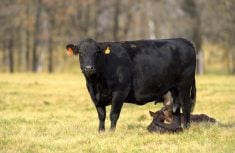Regardless of a person’s perspective on changes coming on antibiotic use in the livestock industry, one thing clear: change is not just on the way — it’s arrived on the doorstep. If not ready, it’s time to get ready. Gaps identified in the use and sale of antimicrobials in animals are nearly two decades old and have finally come to the forefront of enforcement, not to be swept under the carpet again despite the chagrin of industry, complacency of the veterinary profession and the clunky capability of federal regulatory agencies like Health Canada, Public Health Agency of Canada, Agriculture and Agri-Food Canada, Canadian Food Inspection Agency and Canada Border Services.
Read Also

What to know before you go to Agribition 2025
If you’re attending Agribition 2025, this is the place to find out about tickets, dates and what’s happening this year.
CBS Biosystems’ blog, Antibiotic Crackdown: The Elephant in the Room states it succinctly: “What’s been brewing and bubbling has boiled over — with major implications for everyone in the feed business, from feed suppliers to individual operations. In the broad food industry, the big brands have felt the pressure and responded by dictating tough new terms for the supply chain. Large dominoes are falling.” From many perspectives, the statement also applies to general management of animal health on the production side of our industry.
Many beef producers feel their freewheeling and independent way of life is about to be compromised. Producers wanting to use antimicrobials will have to work with a veterinarian. Starting by the end of 2018, veterinary practitioners will be expected to show they have a appropriate client patient relationships established with a livestock producer before prescribing antimicrobials. To some farmers and ranchers, changes that have already taken place and those forthcoming in the near future are perceived as an annoyance, especially to those who have traditionally stood at the periphery of technology adoption and offer a dissident voice to any proposition for change.
Six major changes to the availability and use of antimicrobials in livestock include:
- Increased federal government control on the importation of veterinary drugs for own-use on farm (OUI). Concessions surrounding the purchase of products in the U.S. for import by individual producers were initially given for parasite control products prompted by substantial price differentials between Canada and the U.S. The shopping list expanded to include vaccines not available in Canada and found to be effective in controlling new and highly destructive diseases — primary in the swine industry. The range of drugs that could be purchased in the U.S. by producers and imported into Canada if shown to be for a rancher’s “own use” continued to expand until the list started to infringe on prescription drugs considered medically important in humans. OUI will be prohibited with the exception of certain products.
- More oversight on the importation of active pharmaceutical ingredients (API), chemicals with antimicrobial activity imported in bulk forms, then mixed on farm into feed or water to control disease. APIs imported as chemicals — different from a drug in a finished form — and all too often originated from second-rate and unapproved manufacturing facilities in foreign countries. Steps have now been taken to ensure these products are of the highest quality and produced in accordance with good manufacturing practices. Persons who import, fabricate, package, label or test veterinary APIs must do so under an establishment license.
- Mandatory reporting of sales and imports will start because there is poor understanding of what is sold in Canada. Manufacturers will report annually on the total quantity sold and for which species. This covers imports of drugs and APIs by bona fide manufacturers.
- Access to low-risk veterinary products will be allowed.
- The interim notification pilot program has been in place since 2012 to allow sales of products like vitamins, minerals or Chinese medicines. It has allowed about 600 oral and topical products to enter Canada for pets and horses. It will be expanded to food-producing animals and allows products like calcium boluses to prevent milk fever.
- Growth promotion claims from medically important antimicrobials will be removed. Health Canada has not approved one of these since 2004 and there is no modern data that says they work. About 64 products are implicated. The existing concern is how to replace the additional role some antimicrobials have played in supporting important production needs such as growth promotion and feed efficiency. In many ways this issue is the “elephant in the room” regarding antimicrobial resistance and the fine line between “production enhancement” and “the prevention and control of disease.” In Canada, growth promotion claims are gone. Using mass medication for control of disease will come under strict scrutiny carrying veterinarians and producers into a band of accountability not previously experienced. Use of all medically important antimicrobials in animals is clearly set on a downward spiral; alternative options are on the rise with continued advancement of new tools to supporting efficient and profitable production. Leading examples are feed enzyme technology and innovative synthetics such as nucleotides.
- Increased veterinary oversight and prescriptions for all antimicrobials sold. This includes over-the-counter and medicated feed products. Medically important antimicrobials (MIAs) listed in the Compendium of Medicating Ingredient Brochures (CMIB) will also be listed on the prescription drug list (PDL).
- Provinces and territories may make additional rules about who can sell veterinary drugs.
New thinking is taking hold. There will be a need to become more sophisticated in looking at options and updating antimicrobial use protocols. For those accepting change, the upside is a more stable and sustainable future that fits what the marketplace is asking for. Big players in the animal protein business like Purdue Farms have upped the ante even further by adopting the position: “For consumers who want chickens raised with no antibiotics of any kind, and want that choice now, we are committed to offering consumers the clarity, transparency and assurance that only comes from ‘No Antibiotics Ever.’”
There is no shortage of myth, misconception and controversy in the mix of argument and rhetoric surrounding changes in antimicrobial use. While there is virtually no dispute anymore that antimicrobial resistance is real and agricultural use is a factor, the extent of its contribution is hard to pinpoint and many feel has been overblown.
Dr. Jeroen Dewulf, University of Ghent researcher, in an article that appeared in Feed Navigator.com, debunks common myths on antibiotic resistance that could reduce reliance on antibiotics in a smart, economical and viable way. He emphasizes there is no need for pessimism. Antimicrobial resistance should not be looked at as a threat, rather an opportunity to reach the next level of quality and sustainable production.
Myth #1: The issue is not about antibiotic residues in animal production, but rather the presence of antibiotic-resistant bacteria in the environment that are transmitted from animals to humans.
Myth #2: Antibiotic resistance is a new issue. It has always been here. New levels of antibiotic resistance are the result of antibiotic use; the more you use, the more resistance you have. Antibiotic use enhances the spread resistance.
Myth #3: Reducing antibiotic use will automatically cost money. You can make things better by improving management, biosecurity and animal husbandry.
Myth #4: AMR is not worth losing sleep over. WRONG. Common bugs become superbugs and people die. Costs measure in the billions of dollars.
Myth #5: Change happens quickly. People need time. Coaching, herd management, biosecurity and prudent antibiotic use are factors. Change happens more quickly if everyone is on the same page.
Myth #6: Check management. Improve things like animal husbandry and biosecurity then reduce antibiotic use (in order).
Myth #7: Antibiotics need to be replaced with other medicines. Look at things like better vaccines and vaccination protocols, and improved nutrition. Management mistakes become more obvious after taking away the umbrella of antibiotics.

















